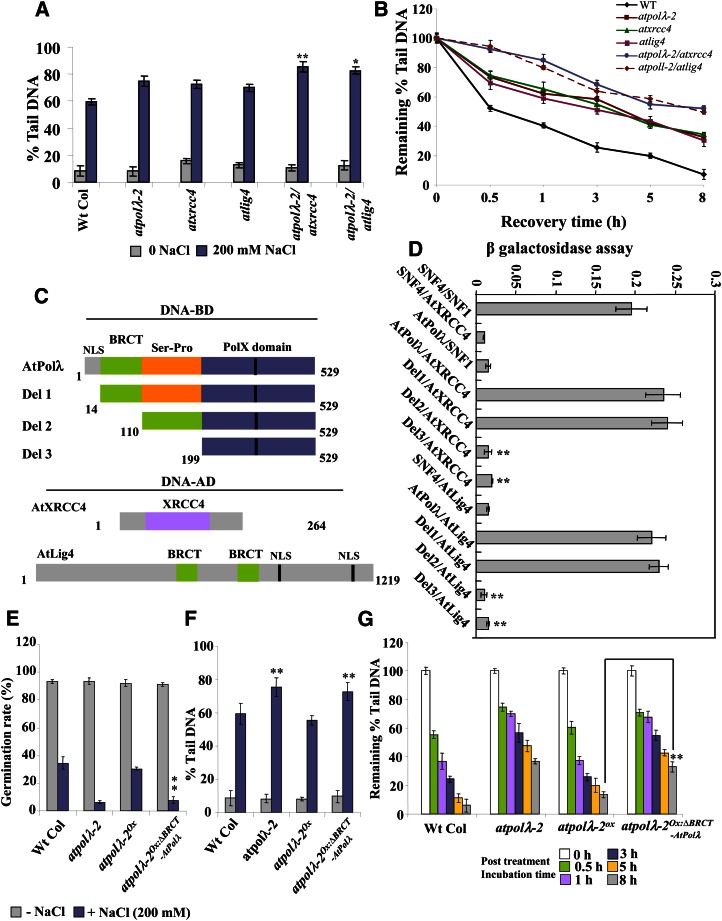Figure 6.
The atpolλ-2/atxrcc4 and atpolλ-2/atlig4 double mutants show delayed repair of DSBs. A, Seven-day-old wild-type (Wt Col), atpolλ-2, atxrcc4, atlig4, atpolλ-2/atxrcc4, and atpolλ-2/atlig4 seedlings were exposed to 200 mm NaCl for 8 h, and the extent of accumulation of DSBs was measured by comet assay under neutral conditions. B, Reduction in DSBs when seedlings were maintained in one-half-strength liquid MS medium for various time points after salt treatment. The results represent mean values ± se of triplicate assays. WT, Wild type. C, Characterization of the interaction of AtPolλ with AtXRCC4 and AtLig4 by yeast two-hybrid assay. Different constructs of AtPolλ were expressed as fusion proteins with the GAL4 DNA-binding domain (GAL4-DB), while AtXRCC4 and AtLig4 full-length proteins were expressed as fusion proteins with the GAL4 transcriptional activation domain (GAL4-AD). NLS, Nuclear localization signal. D, Interactions between proteins were measured by the induction of β-galactosidase expression in yeast following the manufacturer’s protocol. Error bars indicate se from triplicate assays. BRCT-mediated interactions of AtPolλ with AtXRCC4 and AtLig4 are important for DSB repair. E to G, Germination rates, accumulation of DSBs after salt treatment, and kinetics of DSB repair during post-salt treatment recovery periods in the wild type, the atpolλ-2 mutant line, AtPolλ-overexpressing transgenic atpolλ-2 mutants, and BRCT domain-deficient AtPolλ-overexpressing transgenic atpolλ-2 mutant lines. Data shown are means ± sd of three independent replications. *P < 0.05, **P < 0.01 relative to respective controls (n = 3). [See online article for color version of this figure.]

